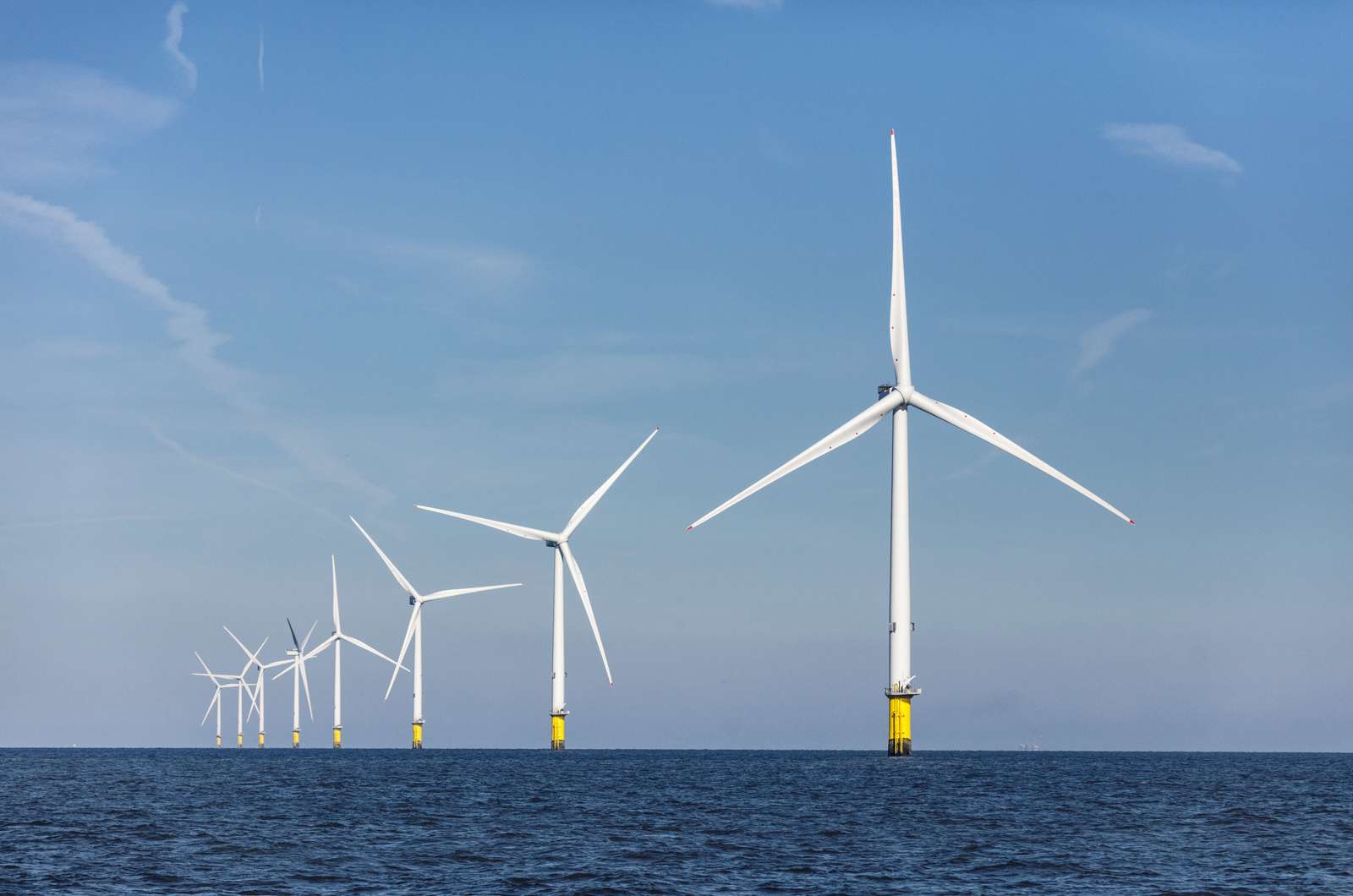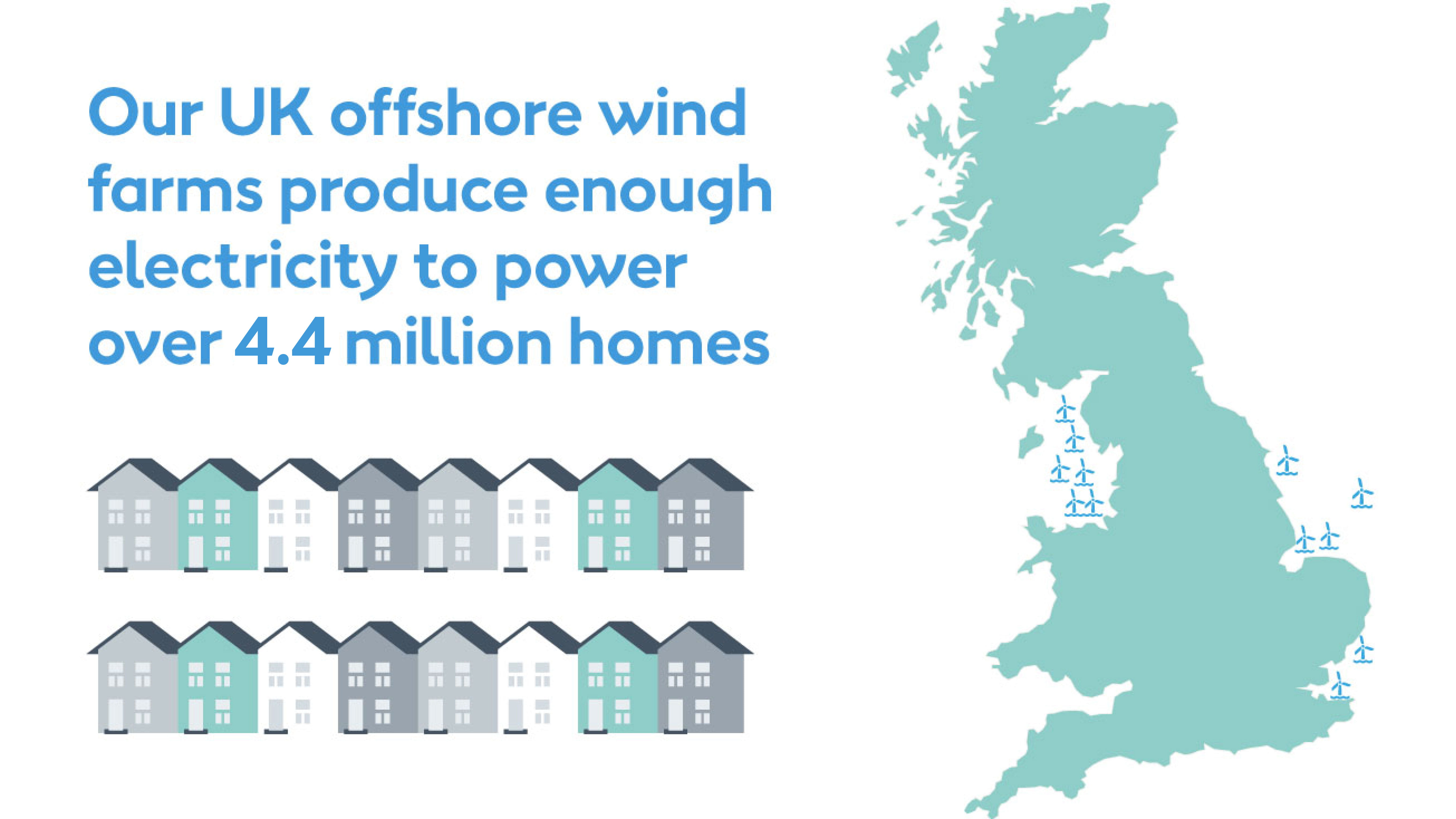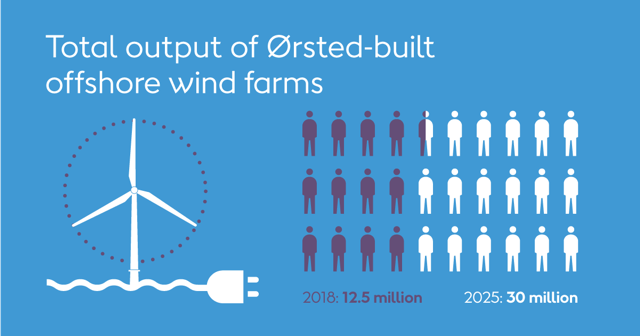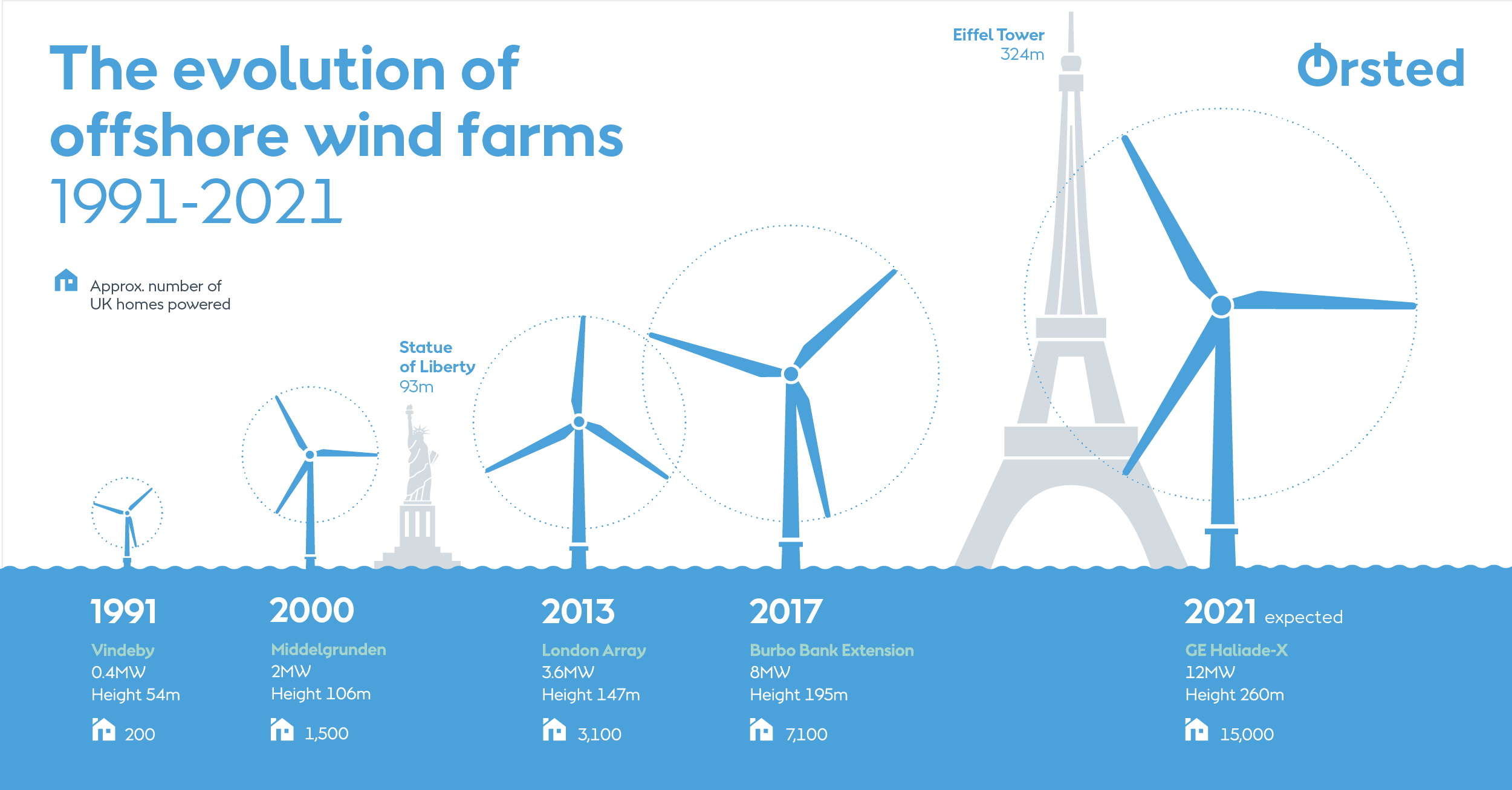
Offshore wind
We're leading the world in offshore wind right here in the UK
On this page
| Home to the world’s largest offshore wind farms |
| Breaking our own records |
| Generating renewable energy with the world’s biggest offshore wind turbines |
| Helping to develop a competitive UK offshore wind supply chain |
| Community benefits of offshore wind |
Limitless supply. Limitless opportunity.
The UK is the world leader in offshore wind, with more capacity installed than any other country. Offshore wind powers over 7.5 million UK homes a year and is set to become the backbone of a clean, reliable and affordable energy system. By 2030, the UK will be getting about a third of its electricity from offshore wind.
Offshore wind is one of the country’s biggest growth industries, already employing thousands of people in highly-skilled jobs and attracting billions in investment, helping to transform coastal communities.

Home to the world’s largest offshore wind farms
The UK is home to the world’s largest offshore wind farms and here we have 12 operational offshore wind farms that we either own or partly own, one wind farm under construction and a further three in our development pipeline. Ørsted’s current installed capacity in the UK is 4,921MW which is enough green energy to power over 4.4 million UK homes a year. This will rise to over 5.6 million homes a year by 2022.
Take a closer look at our offshore wind farms

Breaking our own records
Wind farms have been increasing in size; for a long time the largest was London Array, but in 2018 we overtook it with Walney Extension located off the North-West coast of England. However, our Hornsea One Offshore Wind Farm is nearly double the size of that – truly representing a step change in the size of offshore wind farms. It is the first offshore wind farm ever to be built over one gigawatt, the furthest from shore and now powers well over a million homes with clean electricity. But it won’t hold the title for long, it’s sister project Hornsea Two will take the crown in 2022, providing enough clean electricity for well over 1.3 million homes.
We've become a global leader in offshore wind, and by 2025 it is our worldwide ambition to power 30 million people with energy produced by our offshore wind farms.

Generating renewable energy with the world’s biggest offshore wind turbines
Turbines now generate over four times the power of the first UK offshore wind turbines, dramatically reducing costs across the industry. Innovation has been a key driver of cost reduction and we expect to see turbine sizes continue to grow.

Once operational in 2022, turbines constructed for our giant 1.4GW Hornsea Two offshore wind farm will be almost 18 times as powerful as those used for Vindeby, the world’s first offshore wind farm located off the Danish island of Lolland.
One rotation of a wind turbine blade can generate enough electricity to power a house for over a day.
Z.

